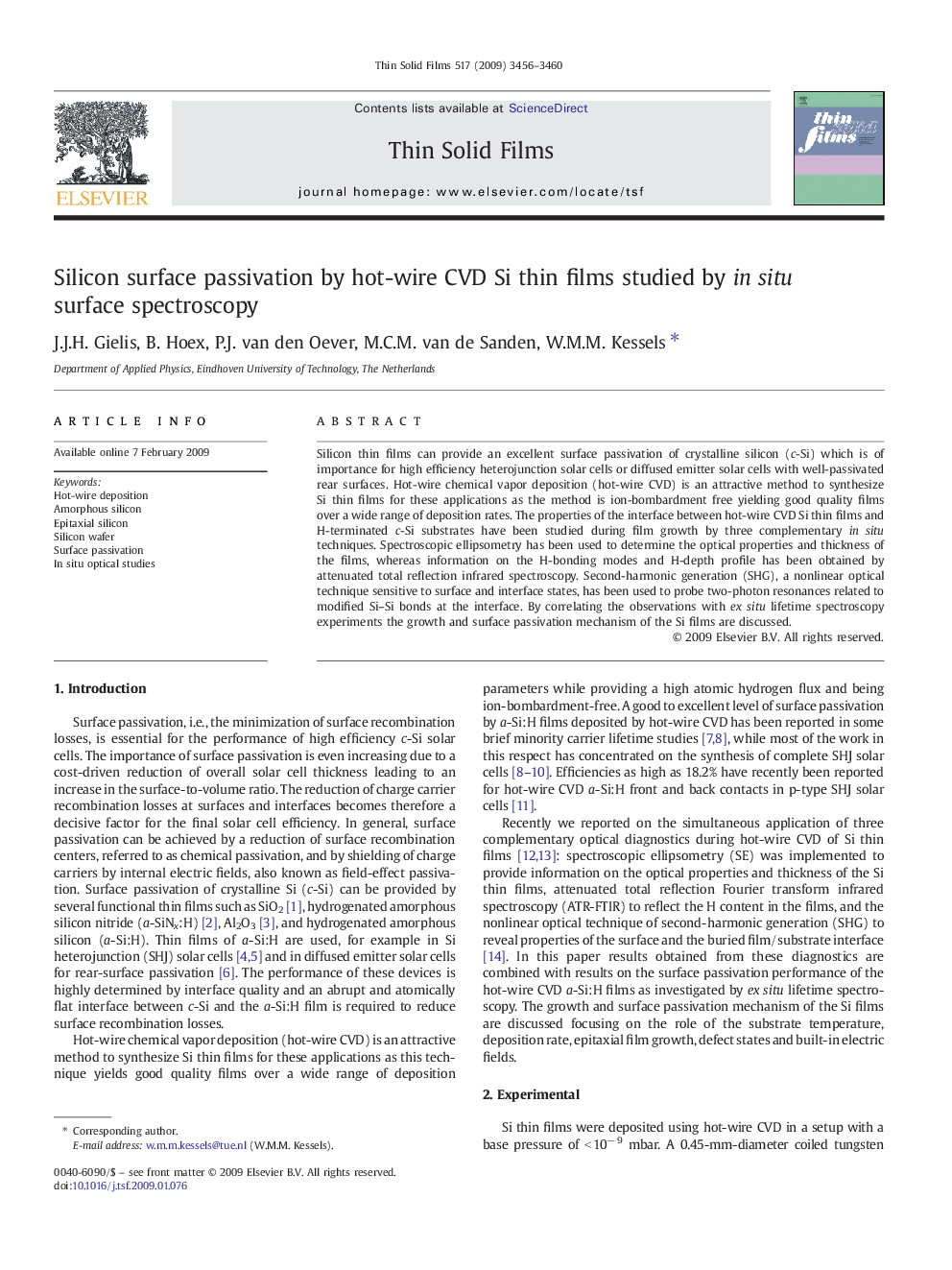| Article ID | Journal | Published Year | Pages | File Type |
|---|---|---|---|---|
| 1673721 | Thin Solid Films | 2009 | 5 Pages |
Silicon thin films can provide an excellent surface passivation of crystalline silicon (c-Si) which is of importance for high efficiency heterojunction solar cells or diffused emitter solar cells with well-passivated rear surfaces. Hot-wire chemical vapor deposition (hot-wire CVD) is an attractive method to synthesize Si thin films for these applications as the method is ion-bombardment free yielding good quality films over a wide range of deposition rates. The properties of the interface between hot-wire CVD Si thin films and H-terminated c-Si substrates have been studied during film growth by three complementary in situ techniques. Spectroscopic ellipsometry has been used to determine the optical properties and thickness of the films, whereas information on the H-bonding modes and H-depth profile has been obtained by attenuated total reflection infrared spectroscopy. Second-harmonic generation (SHG), a nonlinear optical technique sensitive to surface and interface states, has been used to probe two-photon resonances related to modified Si–Si bonds at the interface. By correlating the observations with ex situ lifetime spectroscopy experiments the growth and surface passivation mechanism of the Si films are discussed.
